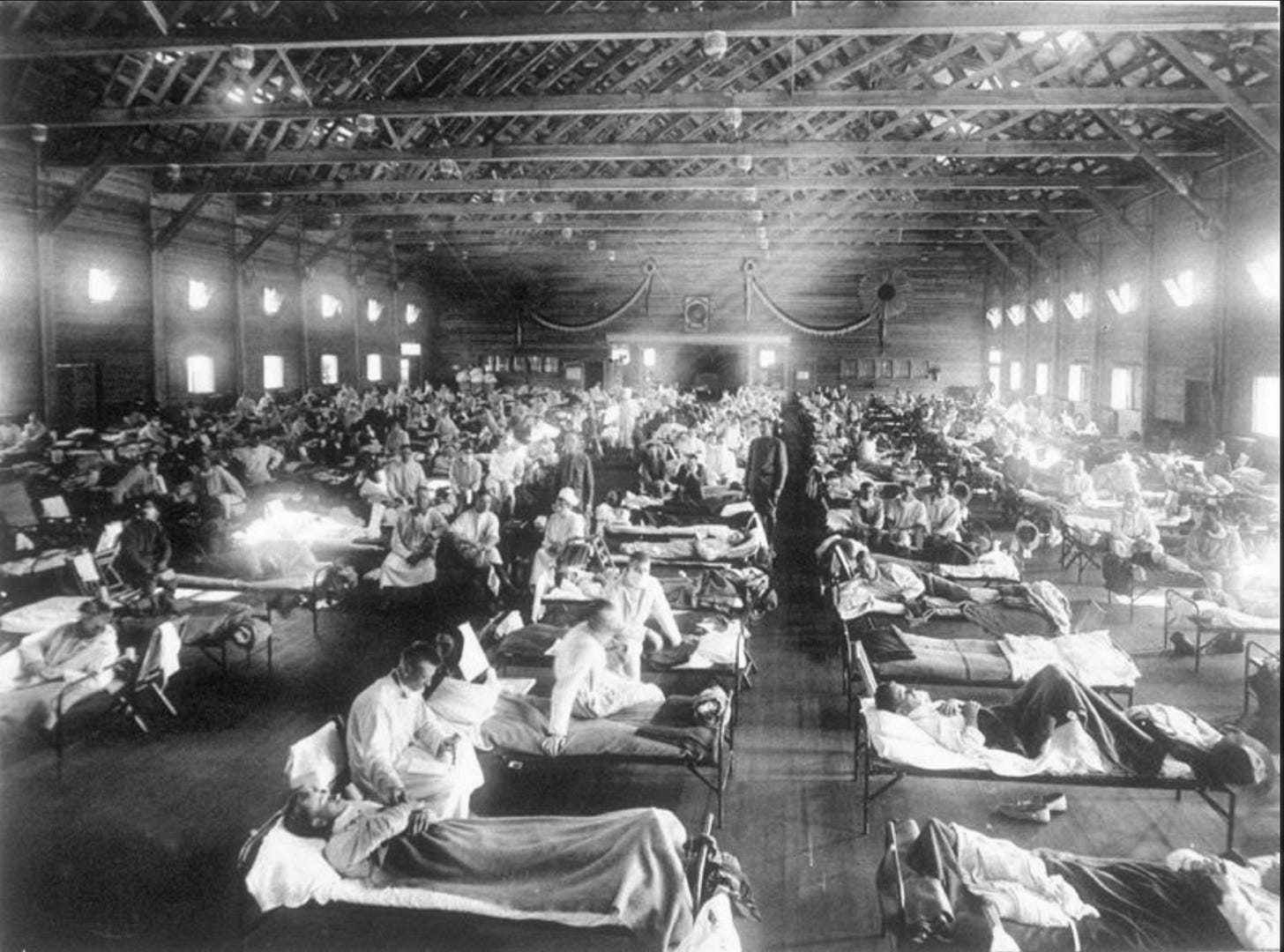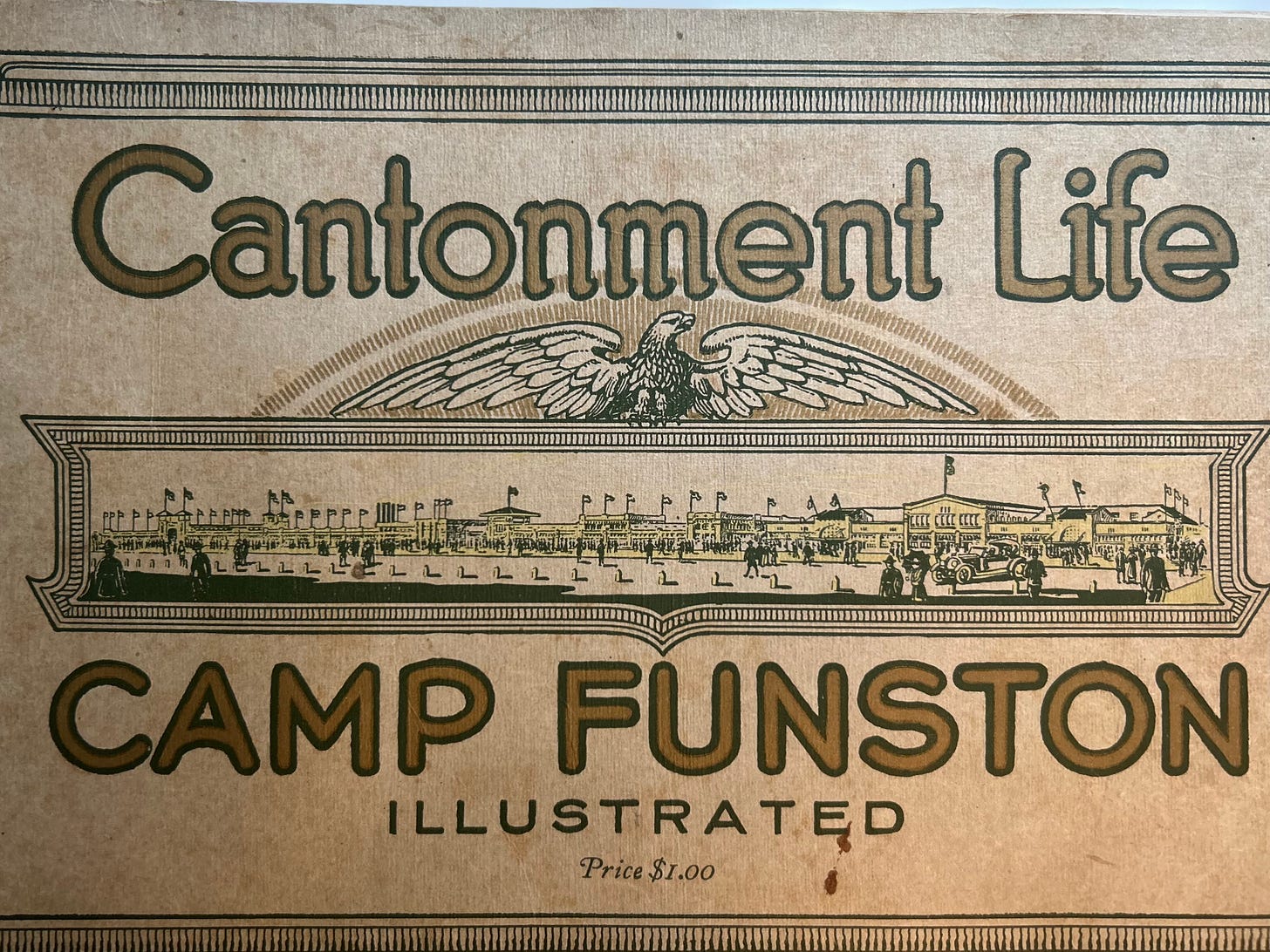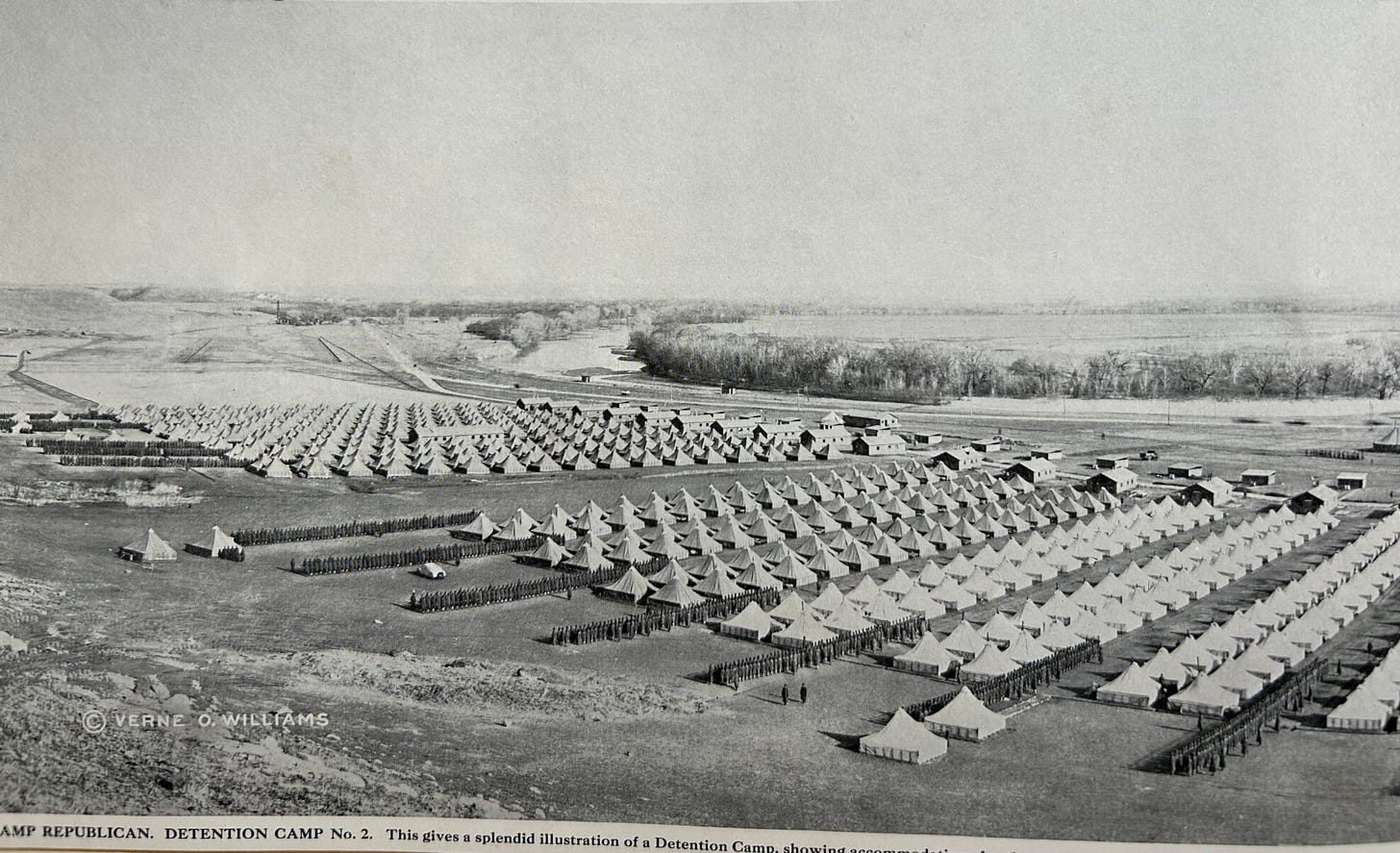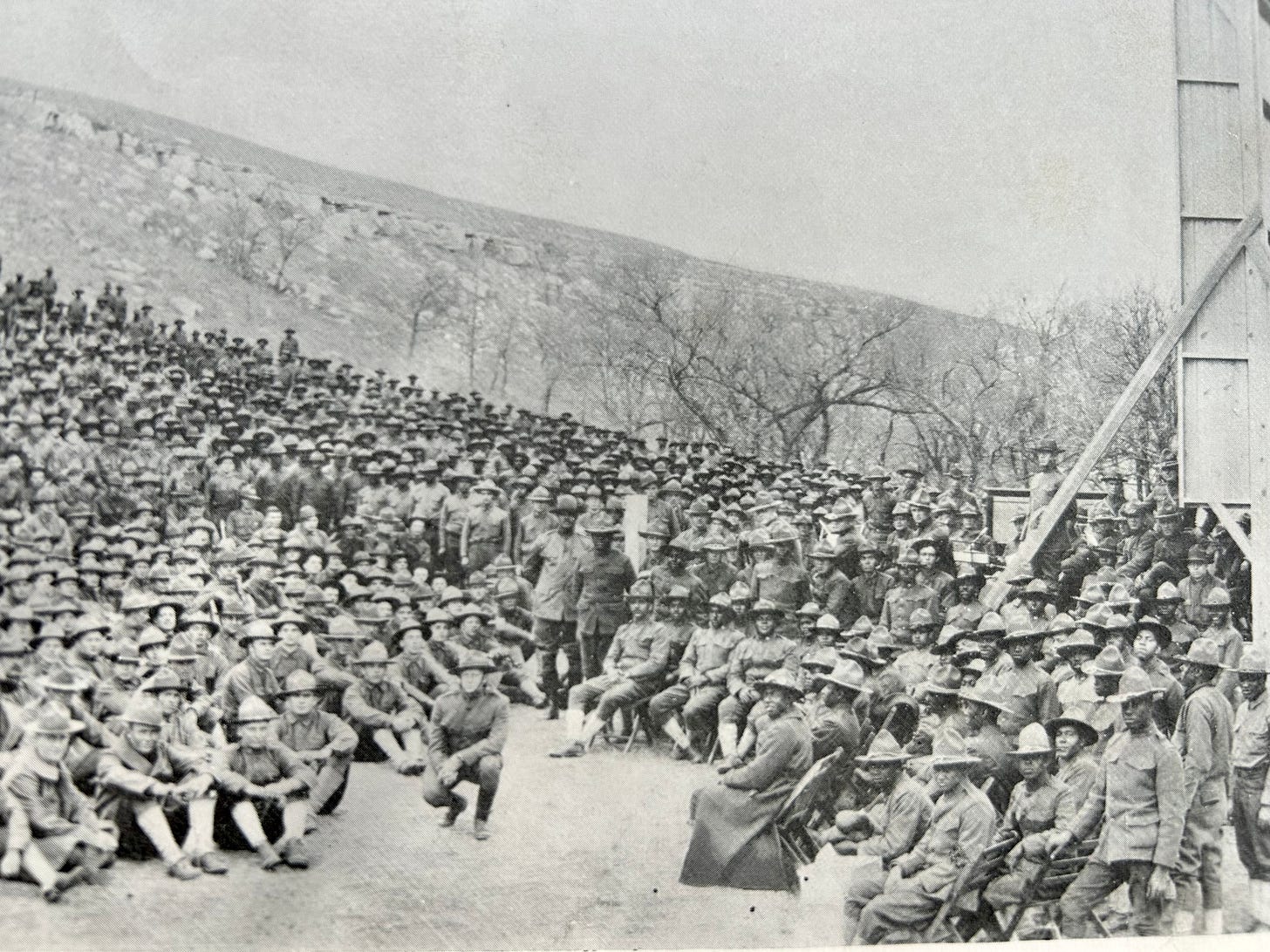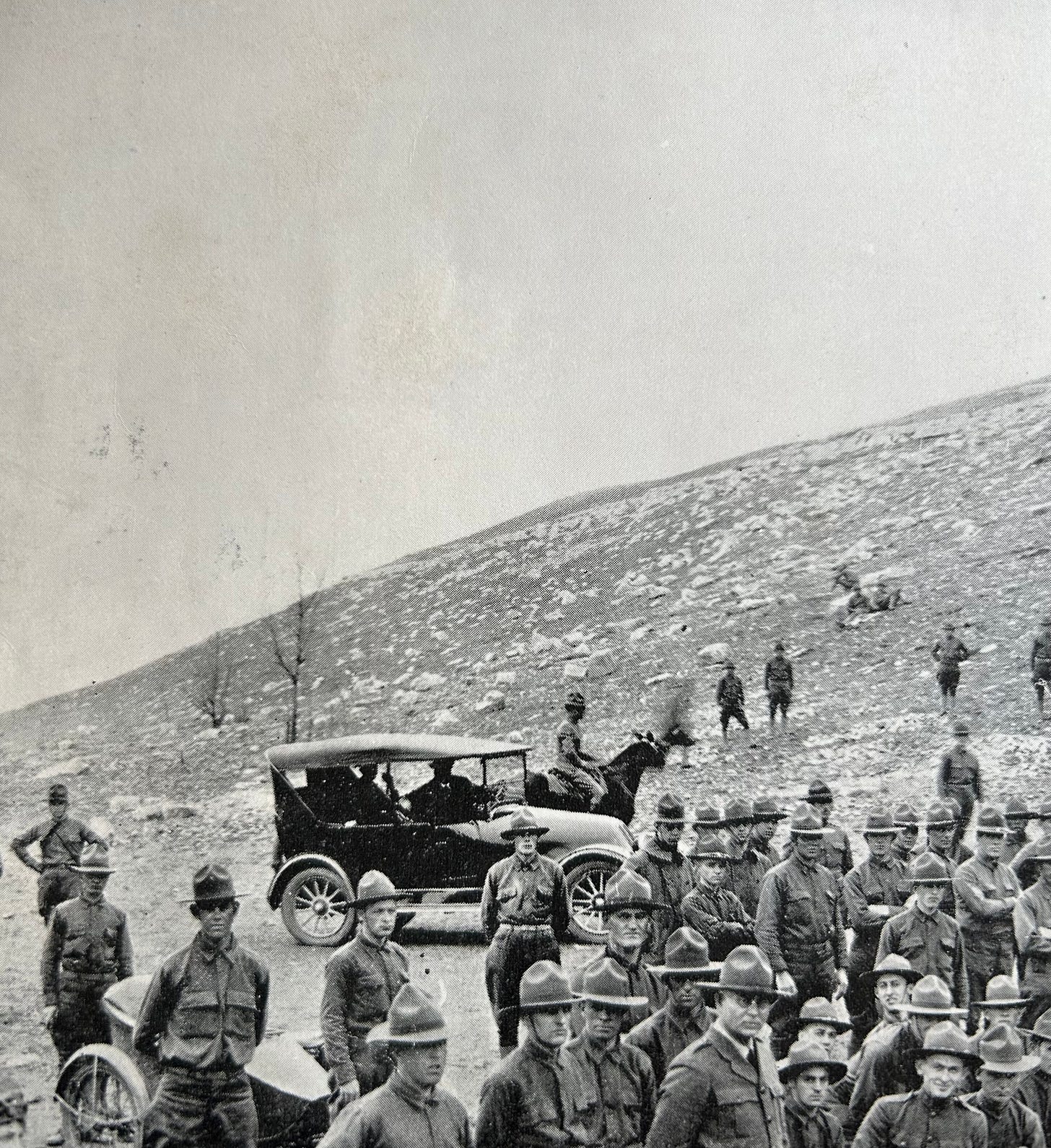The Real Fort Riley and Camp Funston
General Custer, Buffalo Soldiers & Ground Zero for the 1918 Flu Pandemic
As promised, in addition to the novel SHADOWTIME featured on Theda’s Time Machine, we’re going to take a look at the historical aspects of the novel. Of course, in the novel I have taken liberties with some facts, names and places. And since this is a novel about time travel, I figure stretching the truth is expected!
Also, Theda’s Time Machine is currently free to all, but that’s going to change soon, and posts like these will be behind a paywall. Please consider supporting an independent writer!
In the northeast corner of Kansas, Fort Riley has been an active military base since 1853, when it was established as a post to protect people moving between the Oregon, Santa Fe and California trails (Wikipedia). After the end of the Civil War, one Major General George Custer arrived in 1866 to take command of the 7th Calvary Regiment, which left Fort Riley to join a campaign in western Kansas and Colorado. Custer was courtmartialed and suffered a one-year suspension from the army because he traveled back to Fort Riley to visit his wife without permission!
I first heard of Fort Riley and Camp Funston from a documentary about the 1918 Flu Pandemic. Now, I know we’ve heard a lot about the 1918 flu, but this was before Covid and as hard as it is to believe now, I had never even heard of it. The fact that it began in the United States at this military base in the middle of Kansas was fascinating.
By now, a good portion of the plant has seen this photograph of the infirmary at Camp Funston in 1918.
We’ll return to more interesting and odd facts about the 1918 flu, but for now, a little back history on Fort Riley and Camp Funston.
During the late 1800s and into the early 1900s, Fort Riley housed the all-black 9th and 10th Calvary regiments, called “Buffalo Soldiers.” Originally formed in 1866, the Buffalo Soldiers helped westward expansion by building settlements and protecting settlers.
From The National Museum of American History (Behring Center):
It was their role in campaigns against American Indians in the West that led to their regimental nickname. The Buffalo Soldiers National Museum explains, "The combat prowess, bravery, tenaciousness, and looks on the battlefield, inspired the Indians to call them Buffalo Soldiers… Buffalo Soldiers, down through the years, have worn the name with pride."
Corporal Benjamin Blayton of 92nd Division of the 365th Infantry Regiment left Fort Riley in October 1917. Because of segregation, the African American regiments didn’t serve in combat with the American and British forces, but they did fight alongside the French. Blayton fought in the Meuse-Argonne Offensive and returned to the U.S.A. in June of 1918. In 1919, Blayton was awarded District of Columbia World War Service Medal.
Corporal Benjamin Blayton (National Museum of American History).
While researching Fort Riley, I luckily found this booklet describing Camp Funston:
The Cantonment was built during 1917 with the intention of entertaining the thousands of troops that came through Fort Riley and Camp Funston for World War I. At any time there were as many as 50,000 troops stationed at Camp Funston. See description below:
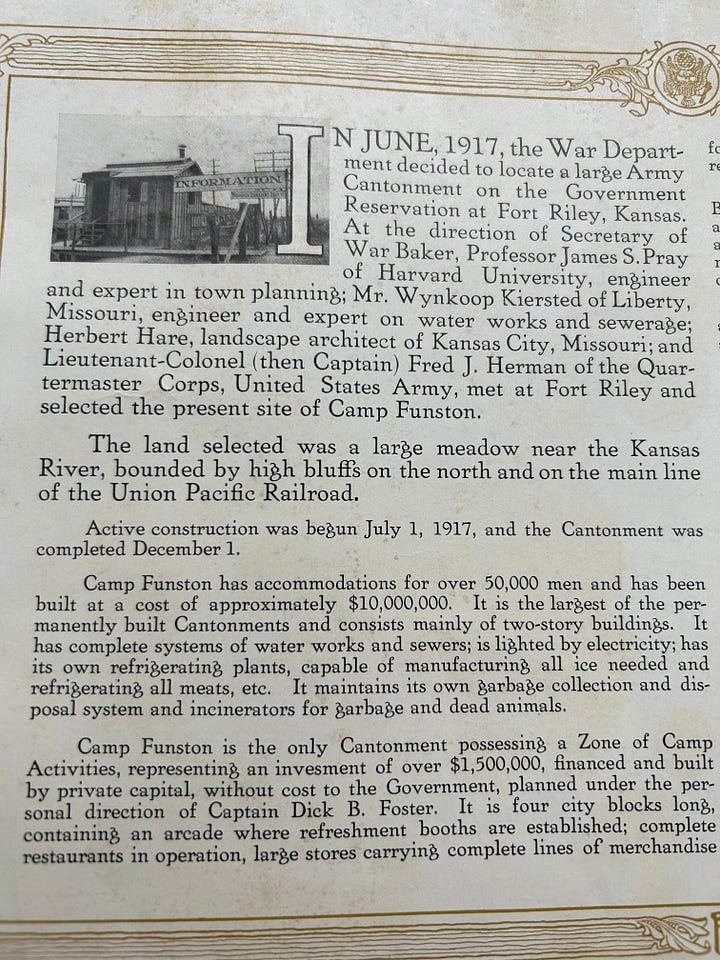

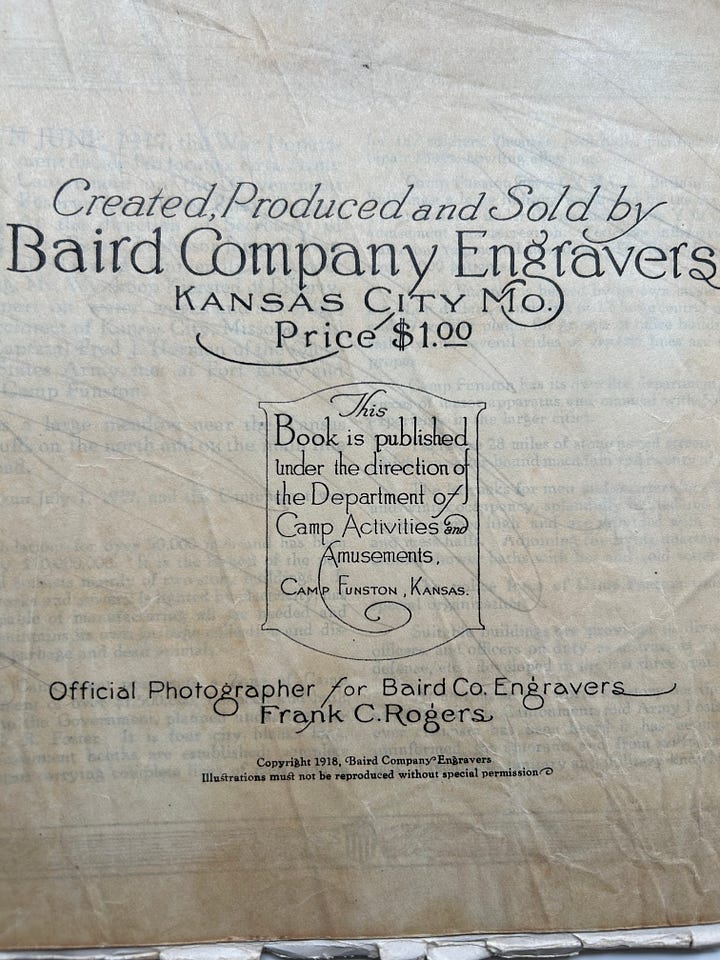
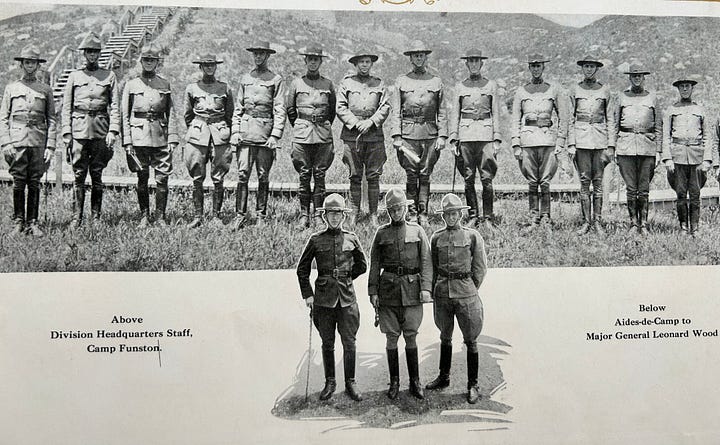
You may remember in Shadowtime, Conlin and Dr. Andersen drive past a scene that looks somewhat like this:
The Detention Camp is where the soldiers stayed when they first arrived. They were treated for any health ailments, outfitted and began their basic training.
The sheer number of soldiers at Camp Funston is hard to imagine unless you see photographs like this one:
This gathering was to watch the entertainment brought in by the YMCA. This photograph as well:
I wonder who those men were in the car?
When you see the massive number of soldiers shoulder to shoulder in so many of the photographs in the booklet, it’s not hard to imagine how the flu, once it started, ripped through the whole place.
I’ll have more photos and essays every month. For now, a big THANK YOU to everyone who is reading my novel, Shadowtime, and to my first paid subscribers! You’re supporting independent writers and that’s a wonderful thing. Thank you!





